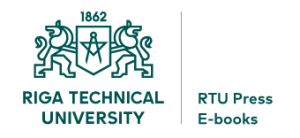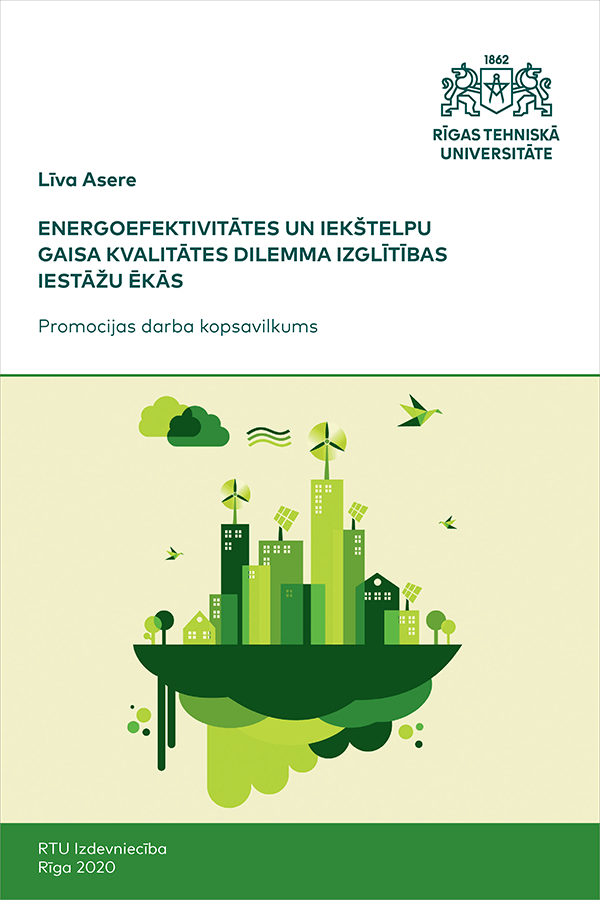Energoefektivitātes un iekštelpu gaisa kvalitātes dilemma izglītības iestāžu ēkās
Summary of the Doctoral Thesis
Līva Asere, Riga Technical University, Latvia
![]() https://orcid.org/0000-0001-7688-834X
https://orcid.org/0000-0001-7688-834X
The largest energy consumer in Europe is the building sector, which uses about 40 % of total energy consumption and generates around 36 % of total CO2 emissions in the EU [1], [2]. Rising trends in energy consumption can be observed globally due to the demand of citizens for increased comfort, wider use of electrical equipment as well as other reasons. As energy consumption increases, climate change is promoted. In a number of areas energy could be used more efficiently, minimizing its consumption and, thus, resulting in a reduction of greenhouse gas emissions. To achieve carbon neutrality in 2050 in Europe Union, ambitious targets have been set, such as improving energy efficiency by 41 %, using 100 % of renewable energy sources and reducing greenhouse gas emissions of 80 % to 100 % [1], [3], [4].
Energy efficient buildings help to reduce heat consumption. State and local authorities need to set an example by improving the energy efficiency of their own buildings in order to encourage changes in other buildings as well. Moreover, the introduction of energy efficiency measures in buildings owned by the public sector contributes to the objectives of national climate policy. However, increasing energy efficiency has resulted in buildings becoming more airtight and natural ventilation systems need to be replaced by mechanical ventilation. However, this, in turn, leads to additional energy consumption costs. To avoid cost increases, building managers do not operate or operate unsatisfactory ventilation systems creating unfavourable indoor air quality. This creates a dilemma of energy efficiency and indoor air quality, which reduces performance of building occupants. This dilemma reduces pupils’ performance in educational buildings, reducing their chances of obtaining a good education and in the future working with higher added value which in turn reduces the country’s gross domestic product.
The objective of the Thesis is to perform an assessment on energy efficiency – indoor air quality dilemma in educational buildings, its impact analyses on national prosperity, and to propose a solution to the prevention of the dilemma. The Thesis is based on six thematic joint scientific publications. The thesis consists of an introduction and three chapters. Four hypotheses have been formulated in the work that are further studied by various research methods, including system dynamic modelling, measurements in real sites and cost-benefit analysis. The thesis begins with an introduction continuing with a literature review of the topics. Chapter 2 presents the study methods. Chapter 3 examines the results obtained during the study and at the end of the Thesis, the findings are summarised according to the hypotheses.
Additional information
| DOI | |
|---|---|
| Hyperlink | |
| Publication type | |
| Defence date | 17.12.2020. |
| ISBN (print) | 978-9934-22-545-1 |
| ISBN (pdf) | 978-9934-22-546-8 |
| Format | |
| Pages | 46 |
| Published online | |
| Publisher | RTU Press |
| Country of Publication | Latvia |
| Publication language |
You must be logged in to post a review.




Reviews
There are no reviews yet.